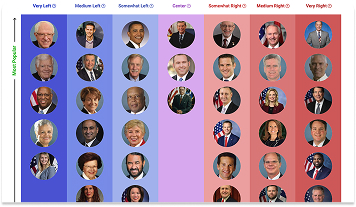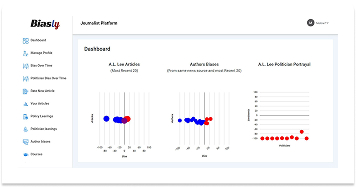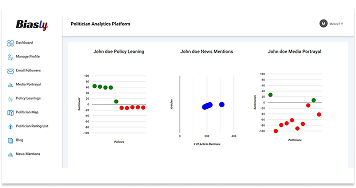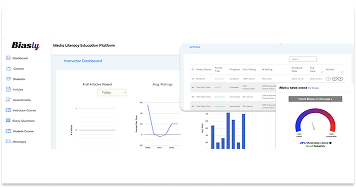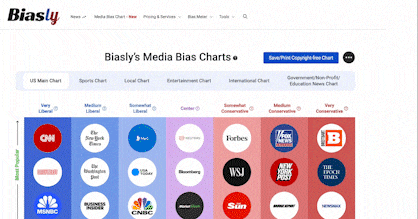Bias Meter
Extremely
Liberal
Very
Liberal
Somewhat Liberal
Center
Somewhat Conservative
Very
Conservative
Extremely
Conservative
-100%
Liberal
100%
Conservative

Biasly determines media bias ratings through a dual-layered approach combining artificial intelligence and analyst review. The platform’s proprietary bias detection engine, Bias Meter, evaluates sentiment, policy position alignment, and language framing across thousands of data points in news articles. Analysts then verify and interpret the AI’s findings, providing additional context where needed. Learn more
- Profile
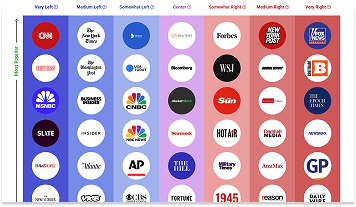
The Telegraph on the media bias chart
The Telegraph has a Bias Score of 38% Somewhat Right which is based on a variety of factors including its policy and politician leanings, article ratings, and the use of biased language. Its Reliability is rated as Average, and additional analytical insights are available in the other tabs.
- Bias Rating
38% Somewhat Right
- ReliabilityPolicy Leanings
14% Somewhat Right
Extremely
LiberalVery
LiberalModerately
LiberalSomewhat Liberal
Center
Somewhat Conservative
Moderately
ConservativeVery
ConservativeExtremely
Conservative-100%
Liberal100%
Conservative
Average Reliability
*Our bias meter rating uses data science including sentiment analysis, machine learning and our proprietary algorithm for determining biases in news articles. Bias scores are on a scale of -100% to 100% with higher negative scores being more liberal and higher positive scores being more conservative and 0% being neutral. The rating is an independent analysis and is not affiliated nor sponsored by the news source or any other organization.
Politician Portrayal71% negative
Continue For Free
Create your free account to see the in-depth bias analytics and more.
By creating an account, you agree to our Terms and Privacy Policy, and subscribe to email updates.
Policy Leanings Analysis
Policy | Bias score |
|---|
The Telegraph Editorial Patterns
The Telegraph reflects a bias of Somewhat Right. While The Telegraph maintains Average reliability in its articles, its editorial decisions indicate a right-wing slant to its reporting. This section will specifically analyze how The Telegraph frames liberal and conservative issues.
Conservative Versus Liberal Topics
While The Telegraph’s articles cover liberal topics such as gun control, abortion, and the war in Gaza, liberal perspectives are underrepresented in comparison to conservative perspectives. By only representing one-sided narratives, the conclusion of the reader is skewed in favor of right-wing policies.
The diction and tone of The Telegraph’s articles may seem neutral. However, the omission of liberal perspectives signals a right-wing bias. This indicates that The Telegraph is more sympathetic towards right-wing perspectives, as they provide more coverage to conservative politicians and policies.
A key takeaway from this section is the omission bias. Oftentimes, ‘what is not said in an article’ can also provide bias insights. Be sure to take note of any perspective imbalances you notice within any article you read and to look for supplementary articles that fill in these perspective gaps.
Policy and Issue Framing
When covering issues like immigration or foreign affairs, The Telegraph tends to take on nationalistic and exclusionary rhetoric. This supports the notion that The Telegraph has a right-wing bias, as protectionary and secure borders is a conservative talking point. By tending to feature conservative politicians as well, The Telegraph reinforces their right-wing bias by portraying one-sided narratives in most of its issue-framing.
On the other hand, liberal politicians and policies are often portrayed much more critically. Liberal talking points like diversity, inclusion, and globalism are often framed as threatening or harmful due to the effect they may have on native populations.
Coverage and Relevance
The Telegraph contributes to the discussion of many different key political areas like immigration, foreign policy, and abortion, but demonstrates a right-wing slant in this reporting as well. Because of this, The Telegraph serves as an interesting case study for bias in reporting.
Be sure to utilize Biasly’s Media Bias Chart to see in what ways The Telegraph portrays their ideological biases in their articles and compare them to other news outlets.
The Telegraph Bias Analysis
From its founding in 1855, The Telegraph has been known as an integral piece of conservative Britain. Surpassing 500,000 subscriptions and winning 11 awards at the National Press Awards in 2020, The Telegraph remains known for its reporting and analysis of contemporary political issues. When it comes to media bias, both AI and media analysts have evaluated its content, sources, and funding to determine its political leaning.
Is The Telegraph Biased?
Based on various Biasly evaluations, The Telegraph is rated as Somewhat Right.
By examining content patterns and the broader context of media influence, we aim to offer a balanced perspective on The Telegraph’s political bias—and contribute to the ongoing discussion about bias in the news.
How Does Biasly Rate News Sources?
Biasly uses algorithms and a team of analysts to provide bias evaluations across thousands of news outlets. Over 200,000 articles from more than 3,200 sources have been analyzed to identify the most accurate and unbiased stories.
Biasly assigns each outlet three key scores:
- Reliability Score – Reflects factual accuracy
- AI Bias Score – Generated via natural language processing
- Analyst Bias Score – Assessed by human political analysts
These scores are based on seven core metrics: Tone, Tendency, Diction, Author Check, Selection/Omission, Expediency Bias, and Accuracy. These elements help analysts and algorithms evaluate the political attitude conveyed by each article.
Biasly’s Bias Meter ranges from -100% (most left) to +100% (most right), with 0% indicating neutrality. The system evaluates individual articles based on political terms, policies, figures, and sentiment to calculate precise bias ratings.
Is The Telegraph Politically Biased?
The Telegraph has a Somewhat Right rating for its AI Bias Score and a Somewhat Right for its Analyst Bias Score. The Analyst Bias Score is generated by reviewers from liberal, moderate, and conservative backgrounds. Analysts reviewed multiple The Telegraph articles and found a preference for conservative politicians and perspectives on issues like immigration and foreign policy.
This Bias score is determined through natural language processing that evaluates the tone, word choice, and opinion embedded in the reporting. Recent AI evaluations note conservative-leaning narratives on issues like the war in Gaza and abortion.
Analysis of Bias in The Telegraph Online Articles
These are the five indicators that Biasly analysts use to recognize bias in news outlets:
- Tone: The overall attitude conveyed by the article
- Diction: Specific word choices made by the writer
- Author: The background and social, political, or ideological presence of the journalist
- Tendency: Patterns of bias in the writer’s broader body of work
- Expediency Bias: Quick visual or textual indicators like headlines and photos that may influence readers to make early conclusions about the article’s topic
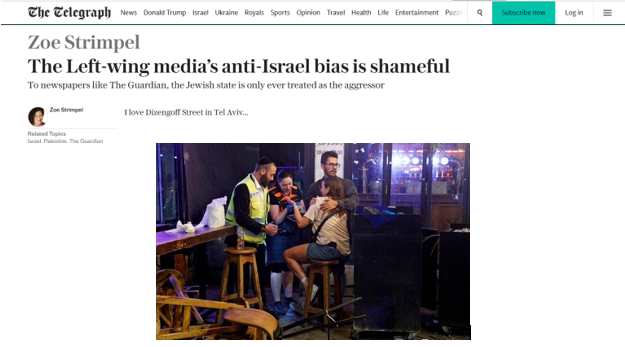
Source: The Telegraph
For an example of expediency, an article that portrays The Telegraph’s conservative bias can be seen in the article: “The Left-wing media’s anti-Israel bias is shameful”. The image pictured above is the cover photo for this article. The image shows at least one person in distress, with people surrounding her and trying to comfort her. This image, considered with the headline, is supposed to make the reader feel sympathetic, but also concerned: we want to find out who made this person feel this distress. Based on the headline alone, it seems that the article will provide evidence of widespread and consistent anti-Israel bias from liberal news outlets. However, the article only pertains to a specific incident of anti-Israel bias and only speaks about The Guardian. The headline misleads the reader into believing there is widespread demonization of Israel by multiple liberal news sources, when the article only provides evidence of a specific incident. This can be seen from the subtitle: “To newspapers like The Guardian, the Jewish state is only ever treated as the aggressor.”
In terms of tone and diction, an examination of another previously mentioned article, “MSNBC has revealed a sinister new dimension to progressive media bias”, provides an example of how the consistent use of diction can alter the tone of an article. Many lines from this article are politically charged:
“Think about the radicals adamant that children should have access to ‘treatments’ meant to indulge the lie that girls can become boys and boys can become girls. Think about the open borders enthusiasts who hold to the bizarre view that any enforcement of any immigration law is immoral. Think about the technocrats, sure that they can tax and regulate an earthly society into a utopia. And think of the throngs marching in the streets in support of a “globalised intifada”, in solidarity with the barbarians who carried out the October 7 genocidal attack on Israel.”
Provocative diction, like “radicals” and “immoral,” portrays the intention of the author: This suggests Schorr may be trying to convey to his readers that all liberals are supportive of these things. The consistent application of terms like these also points towards the tone of the article being conservative. Schorr’s overall attitude is seemingly not very impartial; he sometimes appears to frame conservatives in a positive light and liberals in a negative one.
An analysis of Schorr’s background as well as his other publications for The Telegraph can reveal his biases. Schorr’s social media presence reflects his conservative perspective:
This is a vile lie https://t.co/uMVfBXUVIy
— Isaac Schorr (@isaac_schorr) October 20, 2024
Instead of engaging in a constructive conversation regarding the video or providing his own argument, Schorr simply refutes the video without providing any counterargument.
Analysis of Schorr’s other work for The Telegraph also reveals his tendency to write articles that clearly pander towards his conservative biases. Most of Schorr’s work tends to push the narrative of liberal immorality and paints liberal politicians in a negative light. Schorr also only portrays Trump and other conservative talking points positively.
Analysis of The Telegraph Opinion Articles
The previous sections have only analyzed The Telegraph factual news reporting. It is also important to see how The Telegraph’s bias is prevalent in their opinion pieces too. Unlike factual news reports, opinion pieces are written from the author’s personal perspective rather than from a neutral one.
When analyzing opinion pieces, you can use the same bias indicators that have already been discussed. In The Telegraph’s opinion piece, “If politicians want to know how Britain reached a tipping point, they just need to visit Bournemouth”, the author’s background and previous pieces are important to take into account. A look at Oakeshott’s social media gives us an insight into their own ideological beliefs:
This Christmas, thousands of British people will be sleeping rough on freezing streets. Meanwhile thousands of asylum seekers are sitting pretty in nice hotels. There is something deeply wrong about this…
— Isabel Oakeshott (@IsabelOakeshott) December 21, 2024
Furthermore, here are some of Oakeshott’s previous articles for The Telegraph: “Shoplifters can steal sausages with impunity. But mention bacon to a Muslim and the police come running”, “We should be plastering the St George’s Cross all over England, not pulling it down”, and “Women will pay the price for Labour’s open borders”. With themes of nationalism, anti-immigration, and anti-Islamic rhetoric being the content of Oakeshott’s articles, this consistency points towards a conservative bias in their writing.
Who Owns The Telegraph?

Source: RedBird Capital
The Telegraph was recently purchased by RedBird Capital, an American investment firm, for a fee of 675 million dollars. This purchase makes RedBird the sole controlling owner of The Telegraph. The Telegraph is a for-profit news company, and with 49% of its readers identifying as Conservative Party members, this audience is likely considered when tailoring content.
How to Evaluate Bias
While The Telegraph’s overall Biasly rating is Somewhat Right, the bias from article to article may vary. It is therefore important to be able to examine bias based on individual articles.
Recognizing media bias requires awareness and critical thinking. Often, readers trust news sources that affirm their existing beliefs. This is a psychological tendency known as confirmation bias. This makes it harder to identify slanted narratives.
To combat this, it’s essential to challenge your assumptions by consulting multiple viewpoints and verifying news through third-party analysis. Tools like Biasly’s media bias chart allow readers to compare the same news story across the political spectrum.
Bias isn’t always a matter of what is said—it’s also about what is left out, how topics are framed, and which stories are chosen for coverage. Learning to recognize these patterns can help readers make more informed decisions and develop greater media literacy.
To start comparing news outlets and gain a better understanding of bias, sign up for Biasly’s Media Bias & News Analytics Platform to see how stories vary between sources.
The Telegraph Reliability Analysis
Is The Telegraph Reliable?
According to a YouGov poll, The Telegraph is not necessarily untrustworthy, but it is not very trustworthy either. It is likely that The Telegraph does not retain the readership it has because of its standards of news reporting. It likely caters to a specific audience that agrees with the political stances that The Telegraph takes in its articles, and supports The Telegraph, regardless of objectivity.
How to Evaluate Reliability?
Reliability refers to how trustworthy or accurate a news source is. So how do we evaluate a news outlet’s reliability?
There are several potential measures of reliability to look for when determining whether a media source is reliable. Red flags for an unreliable article can include the presence of unsubstantiated claims, facts dependent on unreliable sources, and heavy use of opinionated language. In contrast, hallmarks of a reliable source include:
- Absence of subjective language
- Citing credible sources (e.g., .gov, .edu, academic references)
- Verifiable facts and statistics from multiple outlets
- Use of primary sources, like interviews or transcripts
- Consistency with coverage across other platforms
Biasly’s reliability scores incorporate these elements in evaluating media outlets.
So How Does The Telegraph Fare in Its Reliability?
The political reliability index developed by Biasly assesses both accuracy and trustworthiness. The Telegraph currently holds Average Reliability Score, which is calculated as a weighted average of:
- Fact Analysis Score – Evaluates the accuracy of claims, facts, and evidence.
- Source Analysis Score – Assesses the number, diversity, and credibility of sources and quotes used.
The Telegraph’s Source Analysis Score is Average at 35% Reliable. This suggests moderate trustworthiness in its sourcing practices. The score is AI-generated and considers quote length, frequency, diversity, and quality.
The Fact Analysis Score is yet to be finalized. This score will further determine how well the Tribune supports its claims, addresses selection and omission bias, and presents verifiable evidence. Until this is available, readers are encouraged to perform their own evaluations using Biasly’s media bias tools.
While The Telegraph leans toward factual reporting, occasional lapses—such as unbalanced viewpoints or incomplete data—can affect its reliability rating. These nuances emphasize the importance of analyzing individual articles.
The Telegraph’s Accuracy and Reliability
Although Biasly provides bias ratings that are the average of multiple articles, it is still important to be able to analyze bias within individual articles. It is important to turn towards bias that may affect the factuality of an article.
Two common types of bias that affect factuality include:
- Selection Bias – Highlighting specific stories to fit a presupposed narrative.
- Omission Bias – Purposefully omitting differing perspectives or relevant details to skew perception in favor of a specific side.
Biasly’s accuracy ratings use a scale from 1% (least accurate) to 100% (most accurate). Factors include the presence of supporting evidence, internal and external reliable sources, and balanced viewpoints.
Analysis of Reliability in The Telegraph’s Online News Articles
The Telegraph’s for-profit status and right-wing bias suggest that the news they provide is meant to suit a conservative audience. Most of their writers stem from a conservative or center-right background, meaning that their coverage will favor these perspectives. It is therefore helpful to describe the differences between news and opinion reporting, and how to analyze them for bias individually.
Quality of Sources and Facts Used
Some indicators of reliability within an article are the number of quotes, the length of each quote, and the different perspectives that are represented by these quotes. Let’s analyze the article “A dark shadow looms over Trump’s attempt to woo the Middle East” in terms of these indicators.
The article has 18 quotes, with six of them being medium-length quotes and three of them being long quotes. This suggests an average level of reliability. To better examine the trustworthiness of the article, here is a list of the sources that were quoted in the article:
- Kasra Arabi, a director at United Against Nuclear Iran (UANI), a United States-based bipartisan non-profit
- Marco Rubio, United States Secretary of State, a member of the Republican Party
- Ali Khamenei, Supreme Leader of Iran
- Hugh Hewitt, host of the conservative talk show “The Hugh Hewitt Show”
- Tom Tugendhat, member of Parliament, member of the Conservative Party
- Robert Jenrick, Shadow Lord Chancellor of the United Kingdom, member of the Conservative Party
- Marjorie Taylor Greene, a member of the House of Representatives, a member of the Republican Party
With most sources representing right-wing perspectives, the article likely favors a conservative portrayal of facts. The diction and tone of the quotes used are not explicitly political. However, by only utilizing quotes from conservative perspectives, the article portrays the issue from only one perspective. Without different sources, it is hard to judge whether an article is trustworthy. The reliability of an article is increased when multiple sources corroborate the same account of facts. Articles with high reliability corroborate their facts with sources from different viewpoints. Although this article may seem neutral, it cannot be classified as anything more than of average reliability.
The Telegraph’s article “Trump considers hiring Eric Adams” is a good example of how diverse sources can build up the reliability of an article. Here are some of the sources referenced in the article:
- Eric Adams, an Independent New York City mayoral candidate, won a mayoral bid in 2021 as a Democrat
- The New York Times, an American news outlet, rated “Medium-Left” by Biasly
- RacetotheWH, an American political polling resource
- Andrew Cuomo, an Independent New York City mayoral candidate, a member of the Democratic Party
- Curtis Sliwa, Republican New York City mayoral candidate
- Politico, an American news outlet, rated “Somewhat Left” by Biasly
While the article only has six quotes, the diversity of the sources from an ideological standpoint makes the article more trustworthy. It may seem like the article only portrays liberal standpoints, but Cuomo and Adams are considered to be centrist Democrats. This evens out the ideological spread of the article. Still, the article could improve its reliability by adding more center-right or right-wing sources. By building a narrative that uses multiple perspectives, the article does not seem like it’s taking sides. Also, how these sources are used means a lot, and it appears that this author has portrayed them with a more conservative slant. For example, Andrew Cuomo is quoted as saying:
“Trump himself, as well as top Republicans, will say the goal is to stop Mamdani. And you’ll be wasting your vote on Sliwa. So I feel good about that”.
This attempts to paint Cuomo as a center-right candidate who is a viable option compared to the other Republican candidates. This allows the reader to create conclusions on their own.
Selection and Omission Bias
A good example of selection bias can be seen in the article, “US warns UK abortion buffer zones put ‘shared values’ at risk”. The article highlights the stories of two women, Livia Tossici-Bolt and Rose Docherty, who are both anti-abortion. By portraying the issue of abortion through only their stories, this skews the reader into assuming there is little opposition to these views. It also portrays their views as common sense. The issue of abortion is a nuanced issue that requires multiple perspectives to grasp. To provide a more neutral portrayal of these complex topics, it is best to provide coverage of abortion from an objective standpoint. Presenting facts and multiple viewpoints gives readers a broader grasp of the abortion debate and enables them to form their own conclusions
An example of omission bias can be seen in the article “Britain needs its own Elon Musk to avoid economic disaster”. This article only has a singular quote. It is from the perspective of Andrew Griffith, a member of the Conservative Party. One quote is never enough to gain an understanding of a topic to draw conclusions. The larger issue of this article is that it omits an important side of the argument. Government spending is a contested issue between liberals and conservatives. Each side provides valid arguments for different aspects of government spending. By omitting one side of the argument, the reader is denied a more complete grasp of the issue.
A decent example of an article from The Telegraph that does not have selection or omission bias is “School shootings are just a fact of life, says JD Vance”. This article provides the issue of gun violence from the liberal and conservative perspectives.
“Mr Vance is a strong supporter of Second Amendment rights to bear arms under the US Constitution, and both he and Trump have spoken against proposed federal legislation to make it harder to buy guns, or to ban high-powered weapons.”
“Mr Vance said the four murders in Georgia were a “tragedy” and sent condolences to the families of victims, but reiterated his opposition to gun controls that have been proposed by Kamala Harris, the Democratic nominee.”
By presenting both the liberal and conservative stances on gun control, the article does not suffer from selection or omission bias. This article provides a multi-faceted overview of how different political stances treat the issue of gun violence.
So, Is The Telegraph Reliable?
In conclusion, The Telegraph can be considered an outlet that is moderately reliable. Despite its ideological slant, it still retains an average reputation for its journalistic integrity. Still, it is important to assess articles individually, as some articles may differ from Biasly’s reliability rating.
As media literacy improves, readers can more easily detect issues with selection bias, omission bias, and factuality. Use the News Bias Checker to compare how multiple outlets report the same story.
Additional Insights
News Source Comparison
The Telegraph is often related to other outlets that have a medium-right bias, like the New York Post. Like most outlets with medium-right bias, The Telegraph tends to focus its articles on conservative viewpoints and politicians, rather than presenting opposing liberal viewpoints.
To gain a more balanced perspective on certain issues, compare The Telegraph’s articles with medium-left outlets. Some medium-left outlets that would be good comparisons are: Vice, Business Insider, and The New York Times.
Notable Contributors and Authors
The Telegraph has a diverse range of authors who are familiar with foreign affairs and global politics. Their team includes reporters who have been with The Telegraph for years, as well as freelance reporters who write articles sporadically. Most of their authors are ideologically center-right or conservative, which is reflected in The Telegraph’s right-wing bias.
Related Tools and Resource Pages
To better understand how The Telegraph fits into the broader media landscape, we recommend exploring these helpful resources:
- Media Bias Chart: See where The Telegraph ranks among hundreds of media outlets across the political spectrum.
- Political Bias Chart: Visualize political slants of news sources across various policy areas.
- Journalist Bias Analytics Platform: Explore how individual journalists contribute to bias within their publications.
- Politician Bias Analytics Platform: Compare how politicians are framed differently by The Telegraph and other outlets.
- Media Literacy Education Platform: Learn how to assess media sources, bias techniques, and news reliability.
Frequently Asked Questions
The Telegraph is rated as Somewhat Right based on Biasly’s media bias algorithm, which assesses sentiment, article framing, and policy favorability.
The Telegraph is not known for promoting fake news. However, some articles have issues with bias in their framing and language usage. However, its factual reporting is generally sound.
Biasly uses a combination of AI sentiment analysis and human analyst review to assess tone, fact accuracy, source quality, and media bias indicators. Learn more on our Bias Meter page.
Yes, but with caution. The Telegraph typically upholds fact-based journalism, though ideological framing and biased tone and diction are present in their articles.
Ratings are based on recent news using data science and A.I. technology.
Military Spending
| Date | Sentiment | Associated Article | Snippet |
|---|---|---|---|
| 08/25/2019 | 75% For | Trump Family Detentions Flores Agreement (link) | So, of course, the Trump administration is doing the opposite in a baldfaced |






















